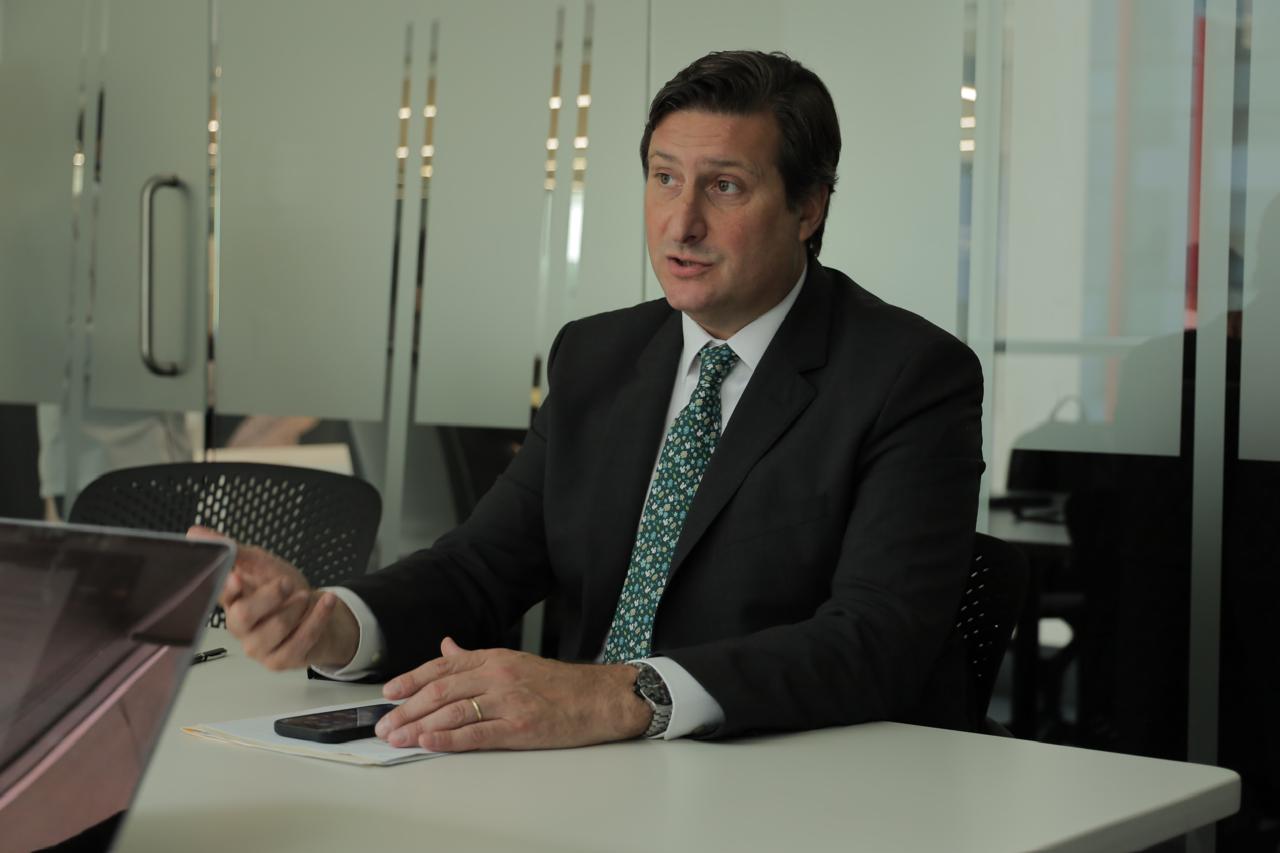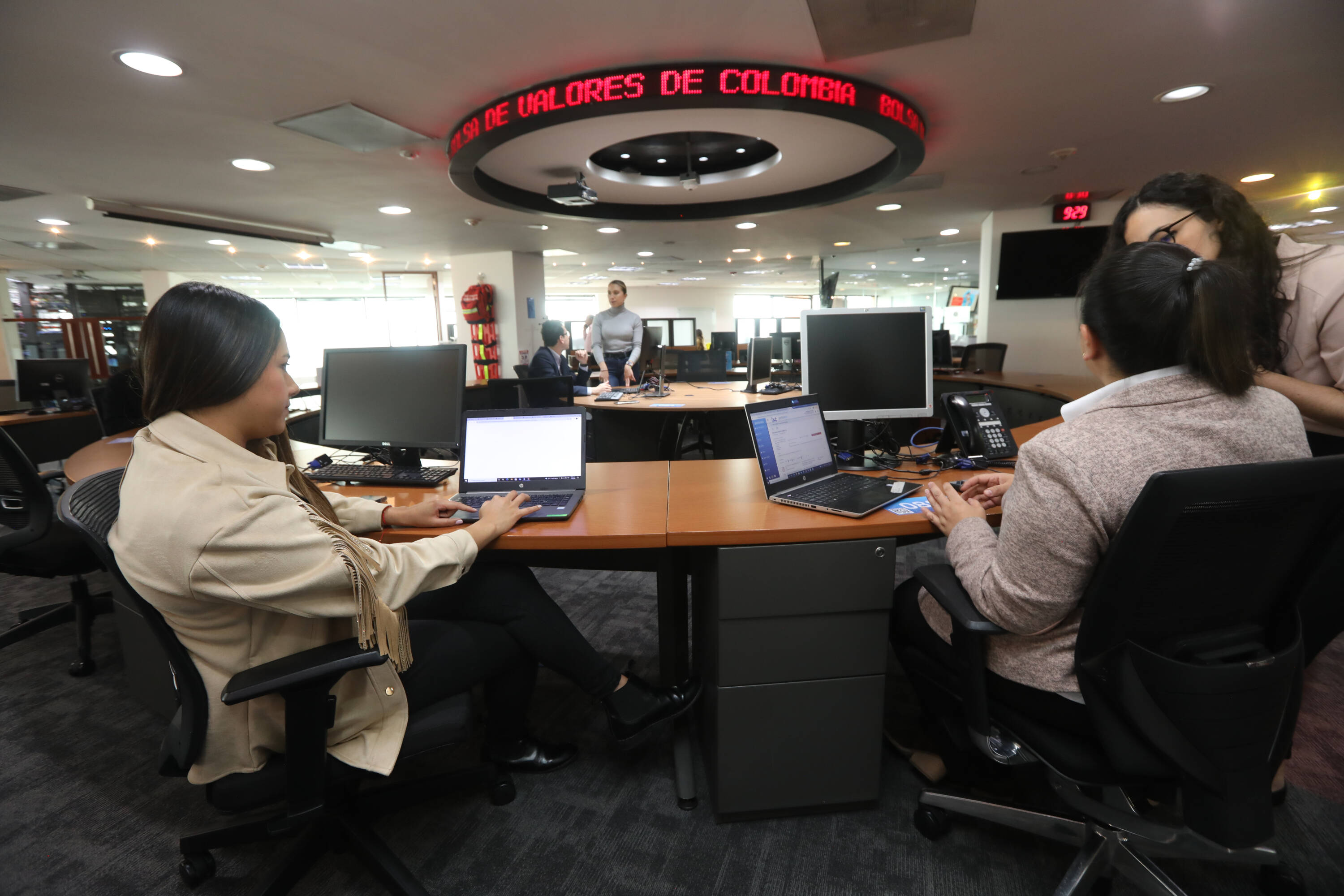'It's essential to have clear rules of the game and legal certainty': Gonzalo Falcone, CEO of Sura Investments

In times of high market volatility like the one we're experiencing today, expert advice becomes essential. Sura Investments, a subsidiary of Sura Asset Management, is one of the companies dedicated to providing support in wealth and asset management. In an interview with EL TIEMPO, Gonzalo Falcone, the company's CEO, explains his plans for Colombia and the opportunities he sees in this market.
How was this Sura subsidiary born and what is its focus? Sura Investments is a regional investment platform that launched Sura Asset Management in 2023 to offer wealth and asset management consulting to individuals, companies, and institutions. Currently, it has a presence in Chile, Peru, Mexico, and Colombia, investment vehicles in the United States and Luxembourg, and manages a total of $23 billion.

Gonzalo Falcone, CEO of SURA Investments. Photo: SURA Investments
We're not planning on opening another market, as we still see many growth opportunities in the countries where we operate, such as Mexico, with a business line called "Corporate Solutions," where we offer financial well-being services to corporate employees.
What lines of business do you have in Colombia? We have $5.3 billion under management across two business lines. On the one hand, there's the Investment Management strategy, with $4.9 billion, which focuses on institutional clients such as Pension Fund Administrators (AFPs), insurance companies, and multilateral organizations as fund investors, among others. On the other hand, we have a line focused on individuals called Wealth Management, in which we manage $418 million.
And would you open up your business lines to the Colombian market? Not soon. Currently, the "Corporate Solutions" business line, which provides employee benefits promoted by the companies themselves, is only available in Mexico. We continue to see significant growth opportunities in that market, as there are projected to be around 14,000 large companies there and we currently serve 500 clients and move $4 billion. We want to continue strengthening our presence there.
Specifically, what solutions do you offer for your institutional clients? From asset management through strategies or our own funds to alternative assets in infrastructure, private debt, and real estate. For example, in the infrastructure sector, we have a presence through a joint venture with Credicorp Capital and manage just over $1.6 billion in funds that have helped finance concessionaires currently operating highways in the country. In total, nine projects have been financed, creating 95,000 direct jobs.

Dollars. Photo: iStock.
Regarding private debt, we are managing $477 million in the region, with Colombia as our main market. In 2023, we launched a corporate debt fund, supported by institutional investors such as pension funds (PFAs), insurance companies, and IDB Invest (the IDB's private sector arm). This fund provides resources to small and large companies to help them continue growing. In total, $74 million in loans have been made to 50 companies in the post-pandemic period.
Will they launch a second version of that fund? We are currently reviewing whether we can launch a second version of this corporate debt fund next year. Since our main claimants are the AFPs (Pension Funds) and the Constitutional Court returned the pension reform to Congress for its final debate, we are analyzing the situation.
How important is it to you that the rules of the game not be changed? Having clear rules of the game and legal certainty is essential for any investor. Infrastructure projects are managed over 30 years, so there's no absolute certainty about what will happen; however, it's important to have regulatory and policy stability. To date, we've supported a lot of infrastructure investment through these debt funds. We also have an infrastructure equity fund, where a Peruvian fund owns certain assets, but one of the assets is Puerto Antioquia, which is being developed in Colombia.
And which of the solutions you offer are designed for people? Our newest business line, "Wealth Management," is designed for them. Specifically, it focuses on high-net-worth clients and we've developed it through "Wealth Partners," which are alliances to reach the clients of our partners, such as Protección Inversores. Additionally, we have Fiduciaria Sura, where we can connect directly with clients. In total, we manage 418 million in assets for more than 2,000 clients.
You say you see growth opportunities in all markets. How much growth do you expect in Colombia? Colombia is our third largest market in the region in terms of assets under management. Furthermore, we believe it has significant potential. On the institutional side, our goal is to grow 80 percent over the next five years. We want to continue growing both with our own fund investment strategies and expand our client base in this segment, for example, with the endowments offered by some universities. On the Wealth Management side, the goal is to grow by 30 percent this year. The trust our clients place in us to manage their resources is fundamental to us.
How would you define the profile of the client who invests with you? In Wealth Management, we target clients with more than $100,000. In the region, we generally see people in their 60s who have built their wealth through their work or entrepreneurship, with a moderately conservative profile, and most of their portfolios in fixed income.

Images of the Colombian Stock Exchange. Photo: Mauricio Moreno
This year, we've experienced significant market volatility and uncertainty, which is worrying for everyone, regardless of their wealth, and reinforces our commitment to being there for them. We strive to support our clients and ensure our advice stands out. First, we get to know them and recommend a portfolio tailored to their objectives, then, depending on market circumstances, we can recommend ways to adjust it, if necessary. Our clients are generally not investment experts, so they appreciate us being there for them and providing them with timely and relevant information.
But how can high-net-worth individuals be reassured in the face of so much volatility? It's true that this semester we've encountered high volatility, with everything going up one day and going down the next. Therefore, our message is that these events have been due to temporary issues, and our recommendation has been to not act in the face of uncertainty and wait for the events to pass to see if there's anything that truly warrants a structural change in the portfolio. That has been our advice. Our commitment is to always be close to our clients and keep them informed.
Sometimes we tend to see the glass half empty. Do you see opportunities in the region right now? Yes, I see them for Latin America. From where one stands, one always tends to see things a little more complex than perhaps someone from the outside with a broader perspective. The region currently has very positive elements, such as, for example, a younger and more educated population, as is the case in Mexico, which has had to meet the demands of becoming a production center for the US market. Additionally, it has lower labor costs than developed markets, with opportunities in minerals and economic growth that, while one would wish for better, is better than projected last year. On the other hand, Latin America emerged better positioned from the tariff war . Although it has tariffs, they were at the lowest levels of those the United States applied to the rest of the world. All of this makes it attractive.

Investments. Photo: iStock
From a risk-return perspective, it has some very effective elements because the Latin American corporate debt portfolio we hold in a Luxembourg-based fund offers attractive returns with limited risks.
And isn't Colombia's fiscal front generating uncertainty? Yes, Colombia is the country with the greatest macroeconomic challenges, relatively speaking. Now, once again, there are opportunities for local clients who need to invest locally. Interest rates, both nominal and real, are attractive, especially for long-term investors.
eltiempo


%3Aformat(jpg)%3Aquality(99)%3Awatermark(f.elconfidencial.com%2Ffile%2Fbae%2Feea%2Ffde%2Fbaeeeafde1b3229287b0c008f7602058.png%2C0%2C275%2C1)%2Ff.elconfidencial.com%2Foriginal%2F962%2F36d%2F4a3%2F96236d4a3d605582db0a5b6ca11a67c1.jpg&w=1280&q=100)


